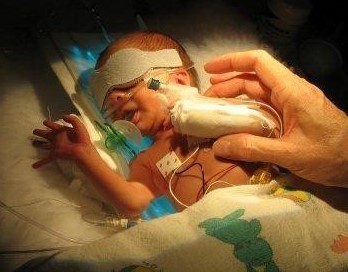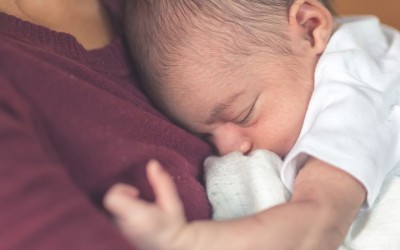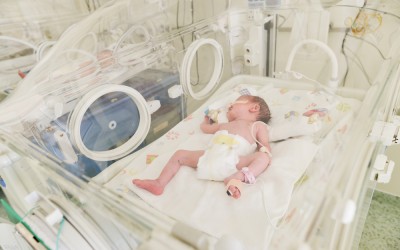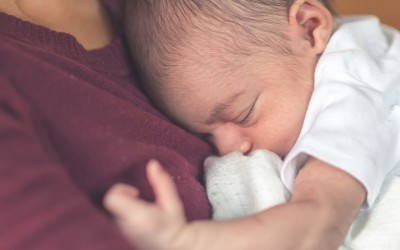
Giving Every Month - a chat with survivor Traci Hanegan
Preeclampsia and HELLP syndrome survivor Traci Hanegan has been donating to the Preeclampsia Foundation in a unique way since 2013 - as one of our “Giving Every Month” (GEM) members.
This month, our Communications team sat down with her to hear about her #MyPreeclampsia Story and why, as one of our longest running GEMs, the work we do at the Foundation remains so important to her.
We asked her: “What would you tell someone like you who was thinking about signing up to give automatically each month?”
“From organizations I've been involved in, I know that monthly donations allow an organization to plan,” said Traci, who in her day job is an engineer in Washington state. “It's a source of regular funding that they can expect. I realize the value of that to an organization like the Preeclampsia Foundation who is leveraging their dollars well. I was raised by parents who also consistently donated and volunteered, and they would always say, ‘Do what you can, and then do more when you can.’”
 Traci was only 33 weeks along in her pregnancy with her son Mitchell when she started experiencing early contractions. When she arrived at labor and delivery, she was surprised to be told that she had high protein in her urine, dropping platelets, and worsening clonus (a type of neurological response, in this case caused by blood pressure issues, that creates involuntary muscle contractions). Even more terrifying, she was beginning to lose her vision.
Traci was only 33 weeks along in her pregnancy with her son Mitchell when she started experiencing early contractions. When she arrived at labor and delivery, she was surprised to be told that she had high protein in her urine, dropping platelets, and worsening clonus (a type of neurological response, in this case caused by blood pressure issues, that creates involuntary muscle contractions). Even more terrifying, she was beginning to lose her vision.
“While they tried not to scare me, they made certain I understood it was serious,” Traci explained. “They made it clear I was not leaving that hospital as sick as I was.”
Despite being reassured by doctors that the delivery of her son Mitchell would help her body to heal, after a day of improvement, Traci’s numbers continued to get worse and worse in the postpartum period. She was placed in the ICU, where her vision continued to grow worse.
“At one point on New Year’s Day, things had gotten so bad that they had a priest come in to anoint me and pray for me,” Traci explained. Her providers were concerned about blood clots or bleeding in the brain. A CT scan showed nothing wrong with her brain, but that the high blood pressure and swelling had likely resulted in a partial detachment of her retinas.
Thankfully, her blood work started to improve. Shortly thereafter, she was allowed to go back to an antepartum room, but continued to have one-on-one nursing care. She recalls one kind nurse helping her “sneak down” to the NICU where Mitchell was, in order to hold him.
After eight days in the hospital, Traci was released home - with her vision still partially obscured and her baby boy still in the NICU.
Traci, who described herself as a “thorough researcher,” almost immediately started scouring the internet for more information about what just happened to her and her son. No one on her medical team had ever used the words “HELLP syndrome.”
 “I thought about wanting to do something about preeclampsia research, so I went online and searched, and I found the Preeclampsia Foundation,” Traci said. “I’ve learned so much since then - I didn't realize my long-term cardiovascular risk was higher; I learned more about HELLP syndrome than I ever knew could be possible; and I’ve encouraged people to participate in the Preeclampsia Registry, including family members, because ultimately, I know research will get us to better treatments for other patients.”
“I thought about wanting to do something about preeclampsia research, so I went online and searched, and I found the Preeclampsia Foundation,” Traci said. “I’ve learned so much since then - I didn't realize my long-term cardiovascular risk was higher; I learned more about HELLP syndrome than I ever knew could be possible; and I’ve encouraged people to participate in the Preeclampsia Registry, including family members, because ultimately, I know research will get us to better treatments for other patients.”
Her baby boy Mitchell faced a six-week stay in the neonatal intensive care unit, but thankfully is now a happy, healthy high schooler. Traci and her husband decided to try again a few years later, which they did under the supervision of a maternal-fetal medicine specialist. With careful monitoring, Traci delivered a baby girl at 39 weeks, 2 days, preeclampsia-free.
Traci enjoys giving through the GEM program because it ensures she is regularly contributing to the development of science, research, and support in the field of preeclampsia.
“I feel like there are some organizations that are leveraging their dollars well, and those are the ones to look for,” she said when asked why she likes giving every month to the Foundation. “You can tell that the Foundation does so much with every dollar - your mission is thoughtful and it’s going to grow.”
Sign up to become a monthly donor like Traci today! Click the link to the left. If you have any questions, contact the Development Director at 321.421.6957 or via email at giving@preeclampsia.org
Related Articles

Doulas can help bridge the gap for any mom, but especially those most vulnerable to maternal illness and death.

Stories of our brave women and families who have been affected by preeclampsia and HELLP syndrome. Please note that due to a technical issue, we are currently fixing the images on this page.

What is Preeclampsia? Preeclampsia is a hypertensive disorder that occurs only during pregnancy and the postpartum period and affects both the mother and the unborn baby. Affecting at least...

Birth Trauma Resources Between 25 and 34 percent of women report that their births were traumatic. A traumatic birth experience is defined by circumstances in which the individual patient bel...

Meghan Markle is opening up about her experience with postpartum preeclampsia in the debut episode of her new podcast, Confessions of a Female Founder. In the episode with her first guest and clo...
1732072344.png)
While the Preeclampsia Foundation has been championing patient advocacy and representation for all families affected by hypertension in pregnancy throughout our 25 year history, we recognized the uniq...

For many members of the preeclampsia, HELLP syndrome, and eclampsia community, the neonatal intensive care unit (NICU) is a life-changing part of their pregnancy and birth experience. Parents from our...

Resultados de varios estudios apoyan la hipótesis de que el estrés causado por un embarazo y parto traumáticos puede en muchas ocasiones anular la habilidad de salir adelante emoc...

As an advocate who served on the planning committee for the Foundation’s Chicago Promise Walk and 5K Run for numerous years and currently serves on the Patient Advisory Council, Jasmine Mago is...

